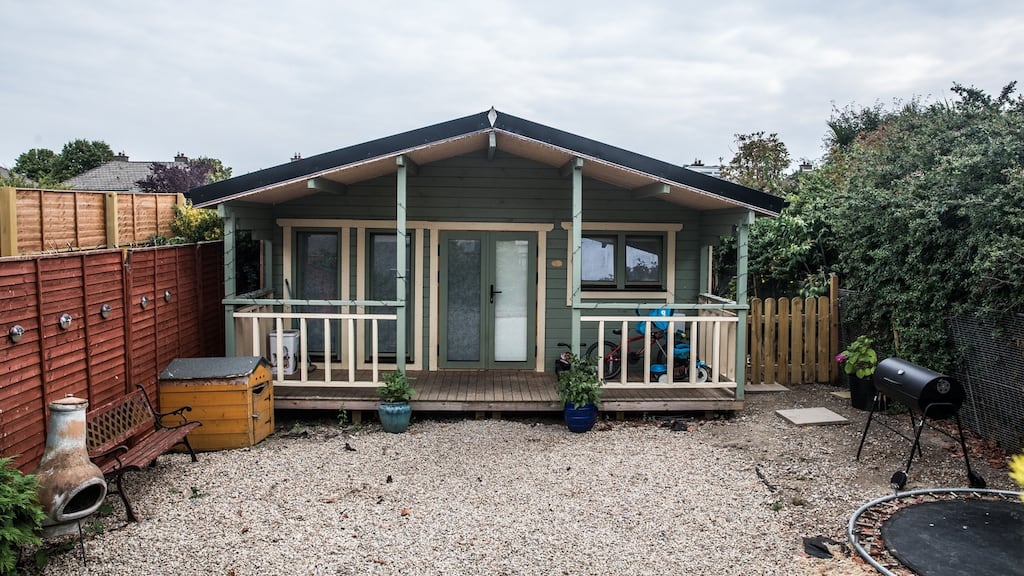The Housing Commission says Ireland may need as many as two million new homes by 2050. This would mean roughly doubling our housing stock – building the equivalent of a new Dublin city, every decade, for four decades.
Many of the two million homes will have to go where housing needs are most acute: our cities and towns. The Government has set a compact growth target of 40 per cent. That means almost half of new homes need to go within existing settlements. And these are the hardest places of all to build. Clearly, this is not going to be easy.
Our towns and cities simply don’t have that quantity of serviced land available. Another problem is high construction costs, which are driving up rents. Dublin’s apartments are the second most expensive to build in Europe.
Ireland does, though, have some cards to play. There’s abundant empty land – not just in rural Ireland, but in the middle of our towns and cities. For instance, there are 3,305 hectares – about 300 St Stephen’s Greens – worth of private garden space in Dublin City Council’s area alone. Gardens already feature home offices, gyms and studios. These structures are often exempt from planning. But while garden offices are allowed, garden homes are not. Development plan rules restrict them.
READ MORE
These rules should change. We should let people build small homes in their gardens. Research we carried out at Progress Ireland, a new think tank, suggests that such a rule change could deliver hundreds of thousands of additional homes.
We call them seomraí; they’re sometimes known as granny flats. A seomra is a small secondary dwelling with a separate entrance to the primary dwelling, which may be attached or detached. They can serve as private rental accommodation or be used for a family member.
But we propose the name “seomraí” rather than granny flat to highlight their versatility. They are not only for older relatives.
Our modelling suggests that a seomraí policy could unlock between 300,000-400,000 homes. We randomly sampled properties and measured their physical and financial suitability. Our model says there are 365,742 homes with enough space for a seomra, and rents high enough to justify building one.
Between 300,000-400,000 homes may sound like a lot. But similar policies have delivered scale abroad. In Vancouver, 35 per cent of all single-family homes have some form of secondary unit. They make up about one-quarter of all rental units in Canadian urban areas. Regulatory reforms in California increased seomraí permits by more than 15,000 per cent. Four years ago in California, 11.5 per cent of all permitted homes were a form of seomraí. New Zealand’s government is pursuing a granny flat policy to help them meet their housing and climate goals. Earlier this year, France proposed similar legislation.
Progress Ireland’s report recommends the next government be ambitious by encouraging the use of seomraí, learning from the experience of other jurisdictions. It can be done through strong incentives and the right planning and regulatory environment. While the report draws on international examples, our recommendations take seriously the challenges of delivering a similar policy in Ireland.
We believe that a seomraí policy will only work if it contributes to Ireland’s climate goals. Opening up a new pipeline of compact growth will gently increase densities and reduce emissions. Meeting our climate goals can be expensive. The good news is that sustainability and low costs come together with seomraí.
They are affordable by design. The cost of delivering an A-rated seomra is currently €70,000, less than 20 per cent the cost of delivering a single apartment in Dublin.
No policy will work by imposing unacceptable costs on neighbours and communities. That’s why our recommendations are designed to ensure that seomraí are integrated into existing neighbourhoods. The scale of development we are proposing is identical to that already permitted under current exempted development regulations. From the point of view of neighbours, the structures erected will be no bigger than those that are commonplace in gardens around the country.
The difference is that, currently, such structures only house additional office space, gyms, garages and sheds. With our proposal, they can be homes. These homes will allow young people to get a start and they will enable older people to have an age-friendly home, without leaving their community.
With the scale of Ireland’s housing shortage, a seomraí policy offers a workable and scalable way to deliver homes where they are needed most.
Seán O’Neill McPartlin is director of housing policy at Progress Ireland, an independent think tank which wants to connect Ireland to proven policy solutions from around the world

What’s happening with Ireland’s housing crisis and where do we go next?
- Listen to our Inside Politics Podcast for the latest analysis and chat
- Sign up for push alerts and have the best news, analysis and comment delivered directly to your phone
- Find The Irish Times on WhatsApp and stay up to date













